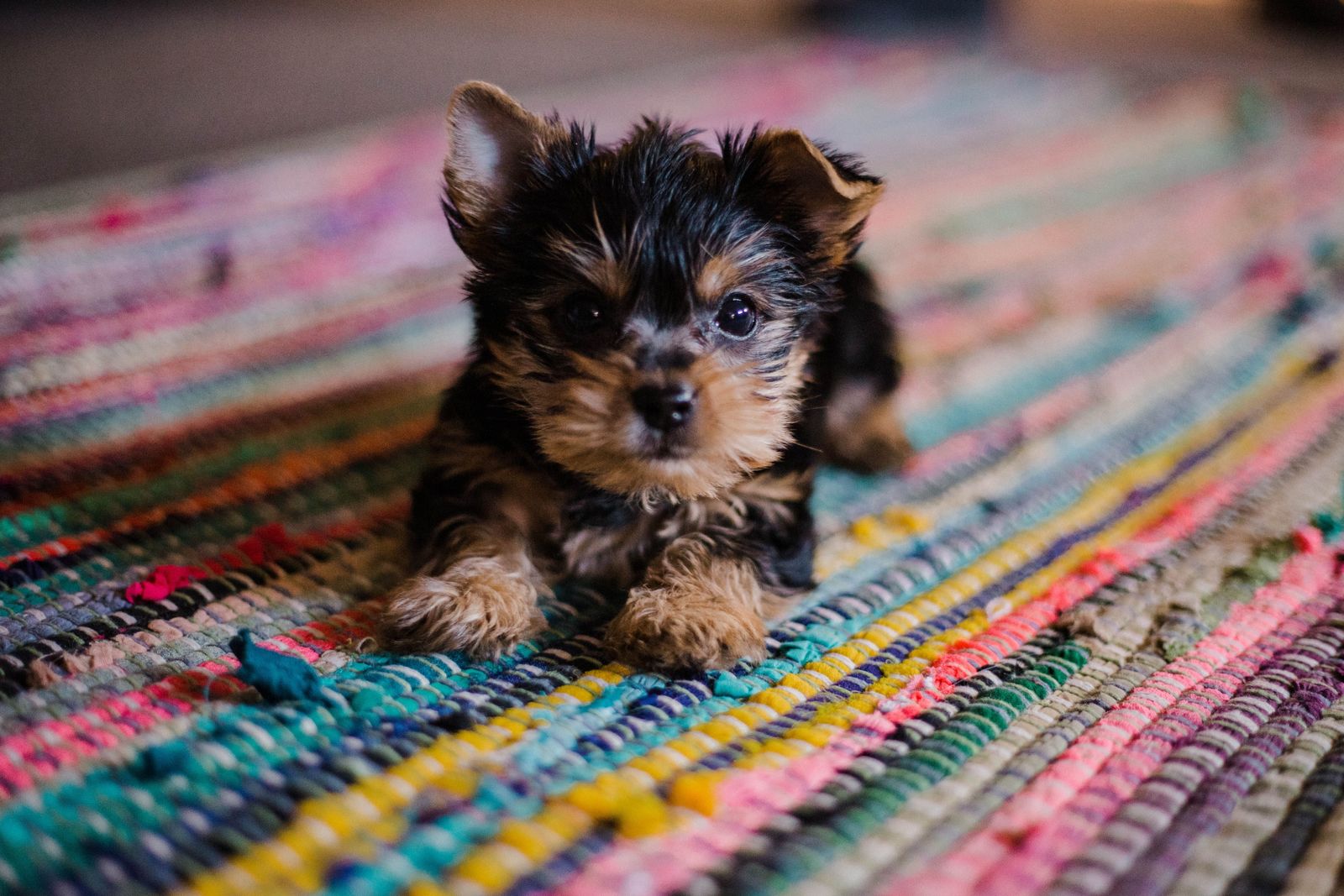Your new puppy checklist

Bringing home a new puppy is one of the greatest joys on the planet. Those little guys are pretty great, but they require a lot of attention and care. And with all the excitement going on, it might be hard to take a pause from all the nose boops long enough to focus and get everything you need. Organization is key to giving your new pal a great start in their new home, so we’ve put together a new puppy checklist to help you out.
Keep in mind that this is not an exhaustive list. Your new puppy will need a lot of gear and accessories over the course of their life.
An adjustable collar
You may be tempted to get something fancy for your new puppy, but that’s not where you should make an investment at this point. While many collars are adjustable, even the fancy ones, they will grow out of starter collars pretty quickly. A simple nylon collar that will grow with them for a few months should do the trick.
ID tags & microchip
Your new furry pal may be new to the world or, if you adopted a senior pet, they may be new to the neighborhood, so make it as easy as possible for them to get back home if they wander off or make an escape from your yard. Be sure their tags have your name, address, and phone number. If your budget permits, try to get them microchipped as soon as possible too. Microchips can be a lifesaver if your dog’s collar happens to fall or get lost.
A cozy spot
Blankets and dog beds are a great way to make sure your new puppy is as comfortable as possible in their new home. After all, everyone enjoys a snuggly place to sleep. If possible, try to bring the blanket with you when picking up your pup for the first time. Rub the new blanket on their littermates or their mom. The familiar scent will make them feel safe and more at home.
And keep in mind that new puppies go through teething stages and explore the world with their mouths, and older dogs may be tempted to work off some stress by chewing, so you'll want to look for bedding that's pretty durable and doesn’t have any loose threads or anything removable attached.
Good quality puppy food
When it comes to food for your new puppy, you’ll probably want the best quality you can afford. Talking to a Vetster vet is a great step to determine what kind of food is best suited to you and your pup. Many manufacturers offer formulas that are tailored to specific ages and breeds. Look for high-quality dog food formulated with the best ingredients for your pet's digestive system. Meat, vegetables, grains, and fruits should be the first ingredients on the list.
Dog treats
Training your dog begins the moment you bring them home. If you choose to train your pup with treats, just remember that treats have calories too. Ideally, treats should only account for about 10% of your dog’s daily caloric intake. Look for treats that are low in calories and made with quality ingredients, just like your pup’s dog food. And finally, soft treats may not be a bad idea for puppies or senior dogs with teeth issues.
Food and water bowls
Once you choose the best food for your pets, you’re going to need a way to serve those yummy meals and their water. Your best bet is to keep it simple. Look for dishes that are appropriate for your dog’s size and bowls that you can fill and clean easily.
Stain and odor remover
Any pet parent can tell you that when it comes to a new puppy, stain and odor remover are a must-have. As your pup is learning to navigate your house and where they can go to relieve themselves, accidents are inevitable. It’s best to be prepared.
Toys
Settling into a new home can certainly be stressful for pets. So be sure to have plenty of toys at the ready. Toys are great boredom busters, and they give your dog a healthy outlet for stress and anxiety—as opposed to chewing on your favorite shoe. To make sure they’re safe and appropriate for your pup, check out our post on pet gift safety.
Pee pads and waste bags
House training is part of the deal with every new puppy, and a good puppy pee pad can be worth its weight in gold. Have a few on hand for those occasions when your puppy doesn’t make it outside. Also, waste bags are a must-have no matter where you live, so keep a good stock for your new walking regiment.
Toothbrush & toothpaste
Toothbrushes and toothpaste make this list because, as most vets would tell you, the sooner you get started on a dental hygiene routine with your dog, the better. If you get your dog used to the feel of teeth brushing as a puppy, you’ll have far less resistance when cleaning and brushing their teeth as they grow into adulthood.
Your virtual veterinarian
Puppy ownership comes with many questions! Selecting your virtual vet is an important first step in their care. During your first virtual appointment, you can expect to discuss the overall healthcare needs of your pup’s specific breed. It makes sense that a Chihuahua will have different calorie needs from a Great Dane, but their nutritional needs can vary too. Your virtual vet can help to select the right food for your pet and your budget.
In this first appointment you can also expect to be asked about where your puppy came from. Whether from a pet store, breeder, or friend, their original environment can influence their care including vaccinations, deworming and other developmental needs. This appointment is a great precursor to your in-clinic appointment for vaccines and spay or neuter.
Lastly, virtual veterinarians are a great go-to for questions about training, socialization and insurance needs. With the convenience of 24/7 online appointments, your virtual vet is at-the-ready to answer your questions as they come up.




